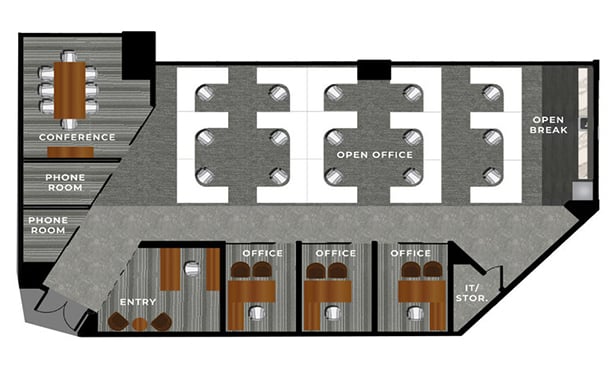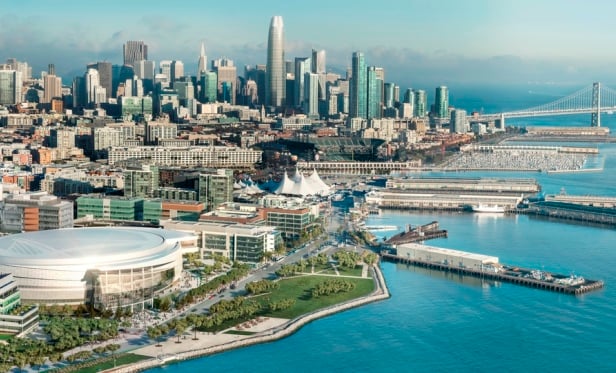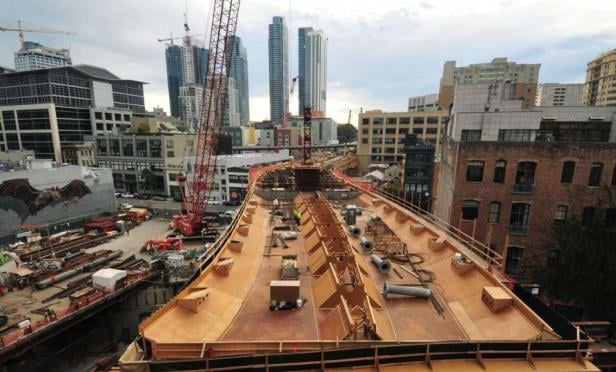NEW YORK CITY—As embattled president Donald Trump and New York Gov. Andrew Cuomo have both professed the need for the federal and state governments, as well as the private sector to invest in infrastructure, a proposal released by the Regional Plan Association to fix the New York City transit system may test their collective resolve.
The RPA in its report entitled “Crossing the Hudson: How to Increase Transit Capacity and Improve Commutes” issued a host of recommendations that would improve and expand Trans Hudson transit service. In addition to advocating the immediate start of construction of the $20-billion Gateway Tunnel project, the regional think tank also recommended other multi-billion dollar infrastructure initiatives.
“Commuting across the Hudson River has become downright miserable for hundreds of thousands of people a day. It's threatening not just our quality of life, but the very foundation of the region's economy,” says Tom Wright, president of the Regional Plan Association. The report states that the federal government, New York State and New Jersey have looked at major infrastructure projects, such as Gateway and others, in isolation and instead need to be studied holistically.
Wright warned, “If no action is taken, commuters who cross the Hudson River every day risk being stranded or forced into increasingly dangerous travel situations. Moreover, the economic health of the entire region and its residents depends on how our current leaders react to this crisis and plan for the future.”
The RPA recommended a phased 20-year infrastructure plan that begins with what it terms as the “first priority”—immediately beginning construction of the more than $20-billion Gateway project. The association states that the entire Northeast corridor depends on the Hudson River rail tunnels damaged by Superstorm Sandy. The RPA in the report stresses that the federal government must honor its commitment to pay for half of the project. The RPA also recommends that the Gateway Development Corp. accelerate the timeline for the project's completion to ease the current transit crisis and avert what it says would be “a transportation disaster if and when the almost 110-year-old current tunnels fail.”
The next project would involve a partnership between the Port Authority of New York and New Jersey, New York City and New York State to build a second bus terminal in the basement of the Javits Center. The facility would consolidate all intercity buses, connect to the 7-line subway station and Hudson Yards, and ease overcrowding at the Port Authority Bus Terminal. The expansion of transit at the Javits Center would be part of an overall expansion initiative at the Javits Center that would include increased accessibility, expanding meeting room and exhibition space onto Pier 76 and the improvement of truck marshaling, loading and parking at the complex.
Once the Gateway tunnel projects are complete, the RPA recommends extending Gateway to Sunnyside Yards in Queens through two new East River tunnels combined with a new station at Third Avenue and 31st St. This expansion would allow for higher-capacity through-running train service at Penn Station that would connect passengers directly to the East Side, the RPA states.
While the RPA report did not provide project cost estimates, Wright in a conference call, estimated the new bus terminal in the basement of the Javits Center would cost $3 billion, while the new East River tunnels would likely involve $7 billion in investment, according to a report in Crain's New York Business.
Finally and perhaps the most ambitious proposal is the RPA's call for the construction of a new and expanded Penn Station complex including Moynihan Station and a “Penn South” expansion that when completed creates a unified station from 30th to 33rd streets and both sides of 8th Avenue. The plan would necessitate the relocation of Madison Square Garden. The new and expanded Penn Station would serve “as a true transit hub with direct and more frequent service between NJTransit and the Long Island Railroad and Metro North,” the RPA report notes.
“We are cheating the clock by relying on connections that are more than 100 years old. To prosper in this century, we need to make bold plans once again. Here is the way—now all we need is the will to do it,” the RPA states in the report.
The report's transit recommendations will be incorporated in the RPA's fourth regional plan, which is scheduled to be released on Nov. 30.
The RPA in its report entitled “Crossing the Hudson: How to Increase Transit Capacity and Improve Commutes” issued a host of recommendations that would improve and expand Trans Hudson transit service. In addition to advocating the immediate start of construction of the $20-billion Gateway Tunnel project, the regional think tank also recommended other multi-billion dollar infrastructure initiatives.
“Commuting across the Hudson River has become downright miserable for hundreds of thousands of people a day. It's threatening not just our quality of life, but the very foundation of the region's economy,” says Tom Wright, president of the Regional Plan Association. The report states that the federal government,
Wright warned, “If no action is taken, commuters who cross the Hudson River every day risk being stranded or forced into increasingly dangerous travel situations. Moreover, the economic health of the entire region and its residents depends on how our current leaders react to this crisis and plan for the future.”
The RPA recommended a phased 20-year infrastructure plan that begins with what it terms as the “first priority”—immediately beginning construction of the more than $20-billion Gateway project. The association states that the entire Northeast corridor depends on the Hudson River rail tunnels damaged by Superstorm Sandy. The RPA in the report stresses that the federal government must honor its commitment to pay for half of the project. The RPA also recommends that the Gateway Development Corp. accelerate the timeline for the project's completion to ease the current transit crisis and avert what it says would be “a transportation disaster if and when the almost 110-year-old current tunnels fail.”
The next project would involve a partnership between the Port Authority of
Once the Gateway tunnel projects are complete, the RPA recommends extending Gateway to Sunnyside Yards in Queens through two new East River tunnels combined with a new station at Third Avenue and 31st St. This expansion would allow for higher-capacity through-running train service at Penn Station that would connect passengers directly to the East Side, the RPA states.
While the RPA report did not provide project cost estimates, Wright in a conference call, estimated the new bus terminal in the basement of the Javits Center would cost $3 billion, while the new East River tunnels would likely involve $7 billion in investment, according to a report in Crain's
Finally and perhaps the most ambitious proposal is the RPA's call for the construction of a new and expanded Penn Station complex including Moynihan Station and a “Penn South” expansion that when completed creates a unified station from 30th to 33rd streets and both sides of 8th Avenue. The plan would necessitate the relocation of Madison Square Garden. The new and expanded Penn Station would serve “as a true transit hub with direct and more frequent service between NJTransit and the Long Island Railroad and Metro North,” the RPA report notes.
“We are cheating the clock by relying on connections that are more than 100 years old. To prosper in this century, we need to make bold plans once again. Here is the way—now all we need is the will to do it,” the RPA states in the report.
The report's transit recommendations will be incorporated in the RPA's fourth regional plan, which is scheduled to be released on Nov. 30.
Want to continue reading?
Become a Free ALM Digital Reader.
Once you are an ALM Digital Member, you’ll receive:
- Breaking commercial real estate news and analysis, on-site and via our newsletters and custom alerts
- Educational webcasts, white papers, and ebooks from industry thought leaders
- Critical coverage of the property casualty insurance and financial advisory markets on our other ALM sites, PropertyCasualty360 and ThinkAdvisor
Already have an account? Sign In Now
*May exclude premium content© 2024 ALM Global, LLC, All Rights Reserved. Request academic re-use from www.copyright.com. All other uses, submit a request to [email protected]. For more information visit Asset & Logo Licensing.









